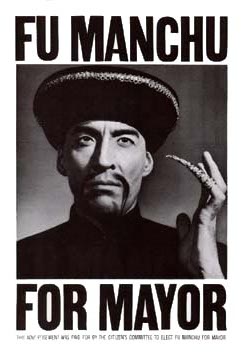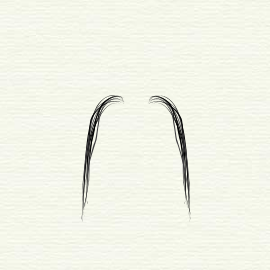
A Fu Manchu moustache or simply Fu Manchu, is a full, straight moustache extending from under the nose past the corners of the mouth and growing downward past the clean-shaven lips and chin in two tapered "tendrils", often extending past the jawline. [1] An expansion of the Fu Manchu sometimes includes a third long "tendril" descending from a small patch on the chin.
Contents
The Fu Manchu moustache derives its name from Fu Manchu, a fictional character created by English author Sax Rohmer, who is shown wearing such a moustache in film adaptations of Rohmer's stories. The literary Fu Manchu did not wear a moustache. The famous facial hair first appeared in the British serial The Mystery of Dr. Fu Manchu (1929); the Fu Manchu moustache then became integral to cinematic and television stereotypical depictions of Chinese villains.
The facial hair style is often used to stereotype East Asians, more specifically Chinese people. Many caricatures of Chinese in the 19th and early 20th century depict Chinese with such facial hair. The Fu Manchu is a category of competition in the World Beard and Moustache Championships. [2] [3]

